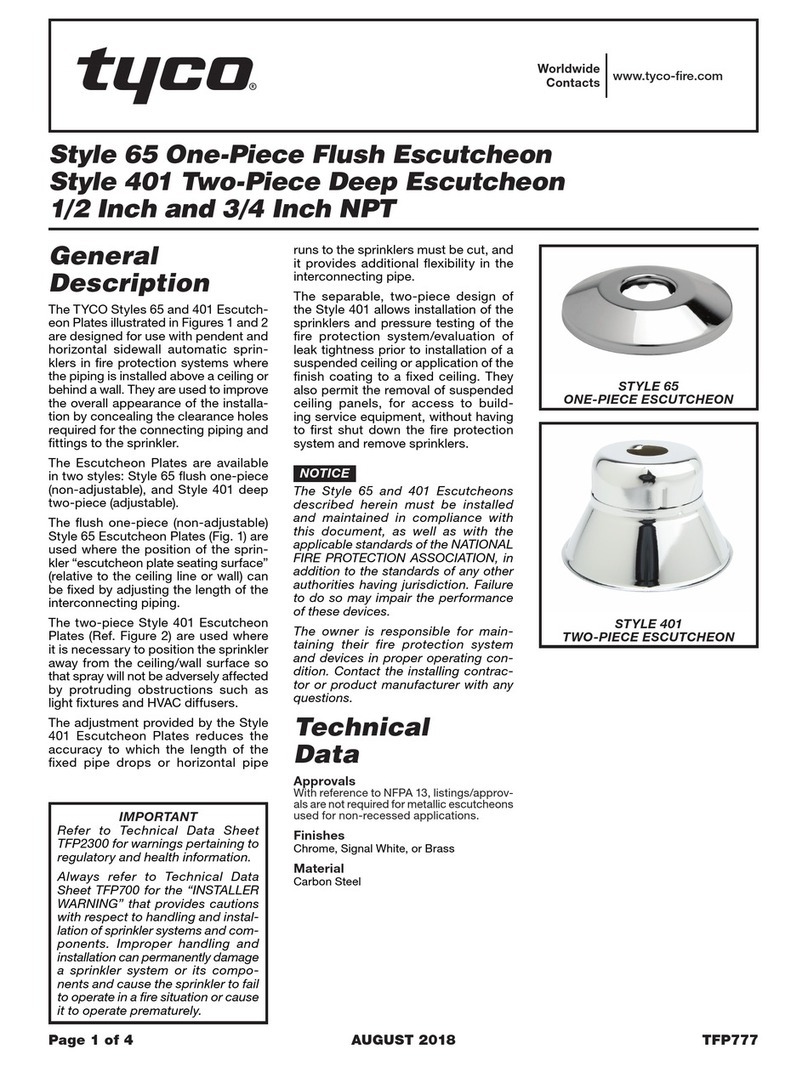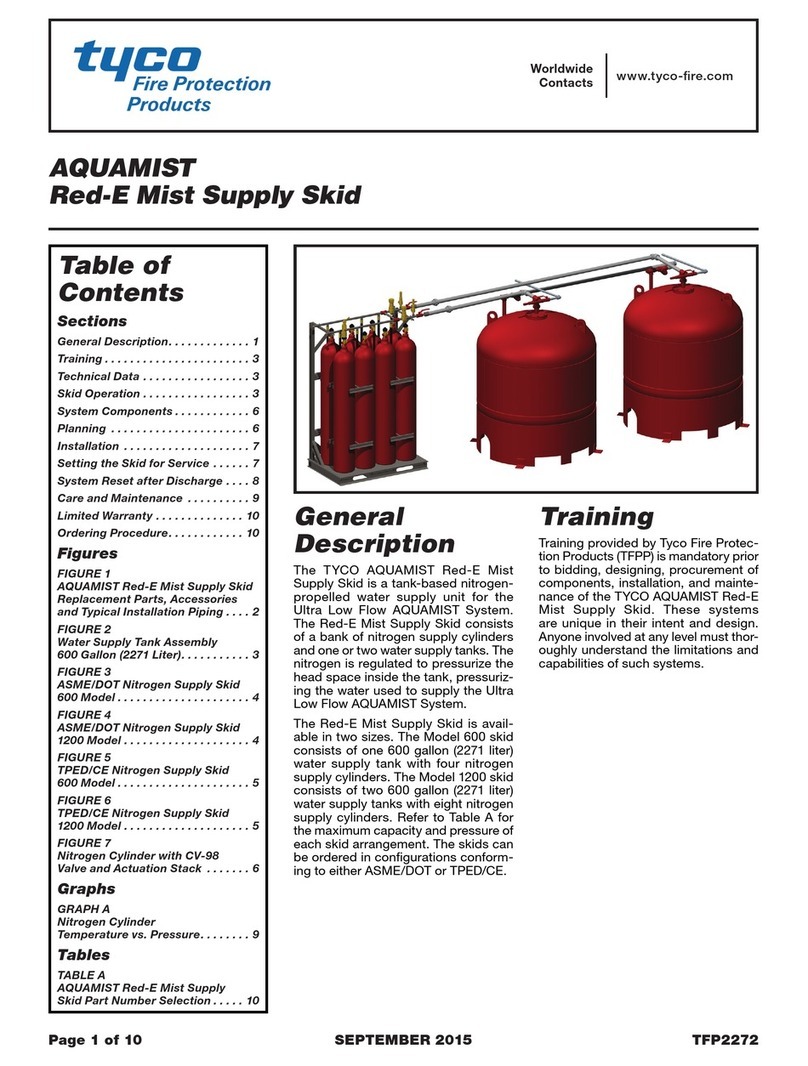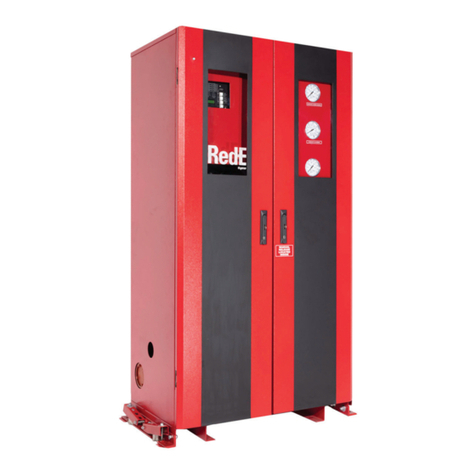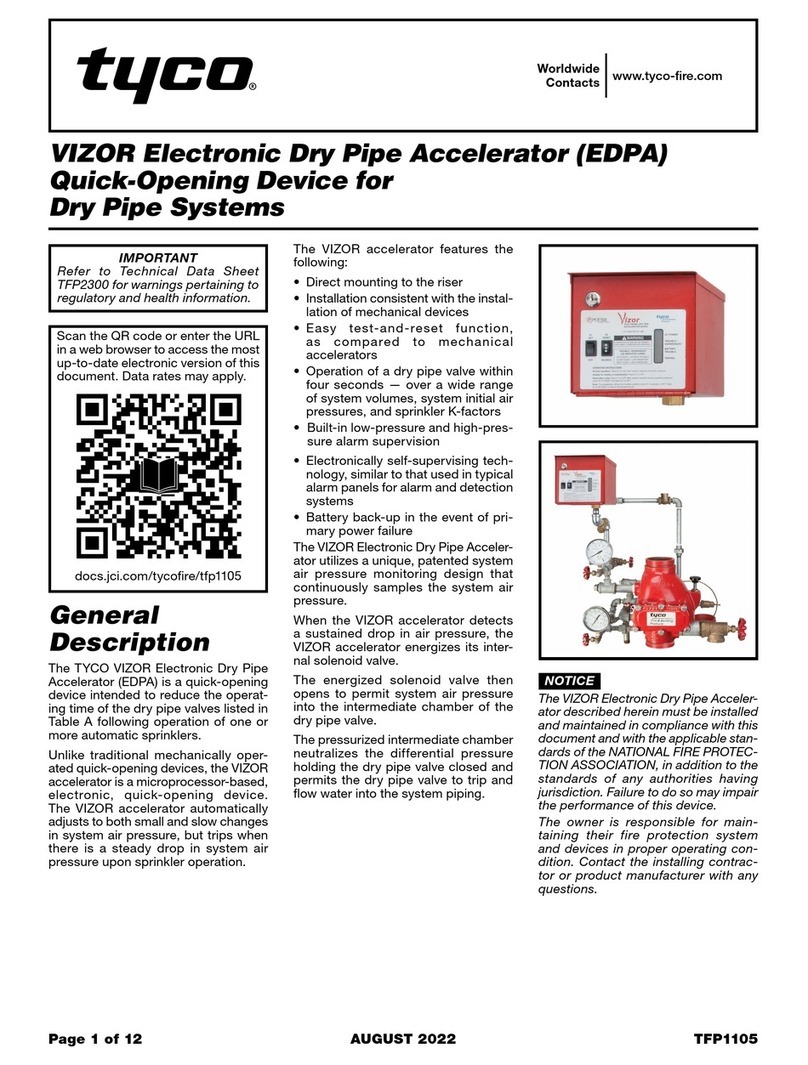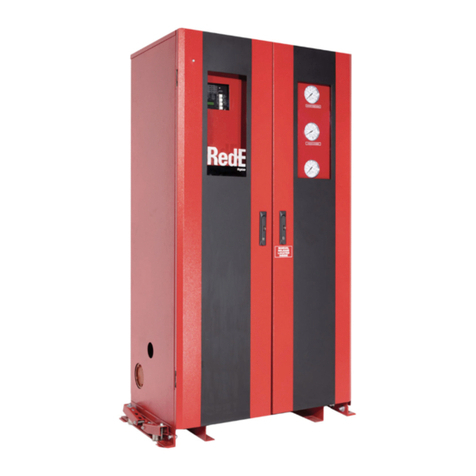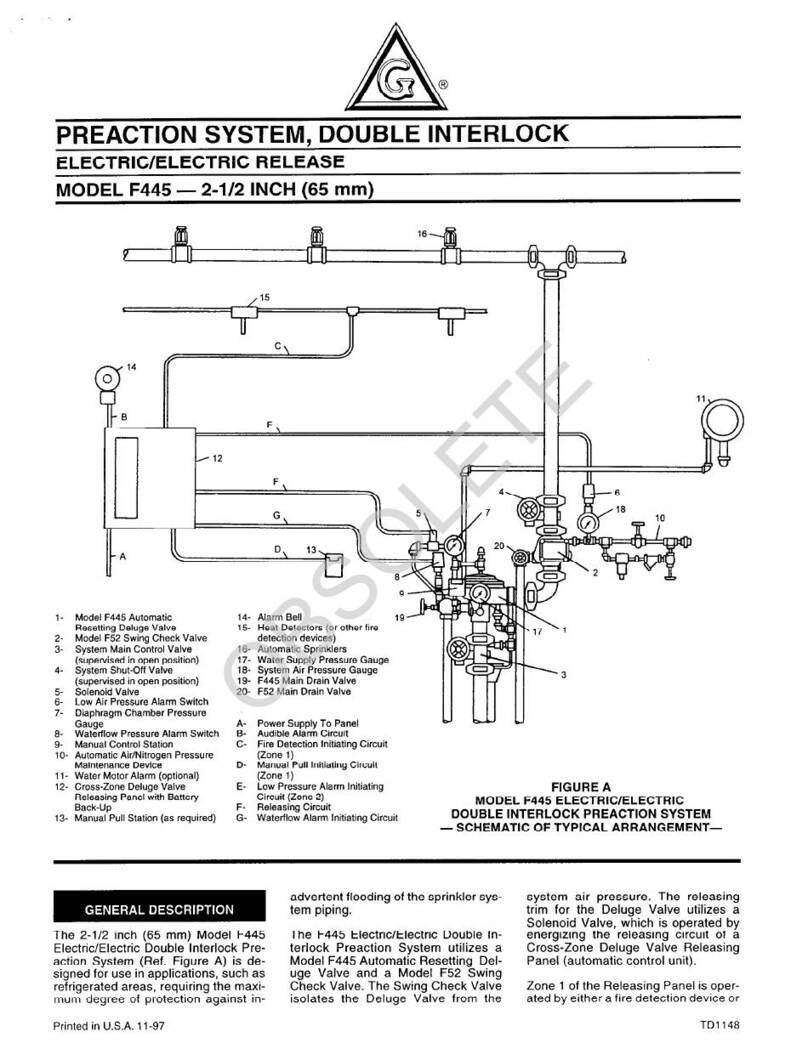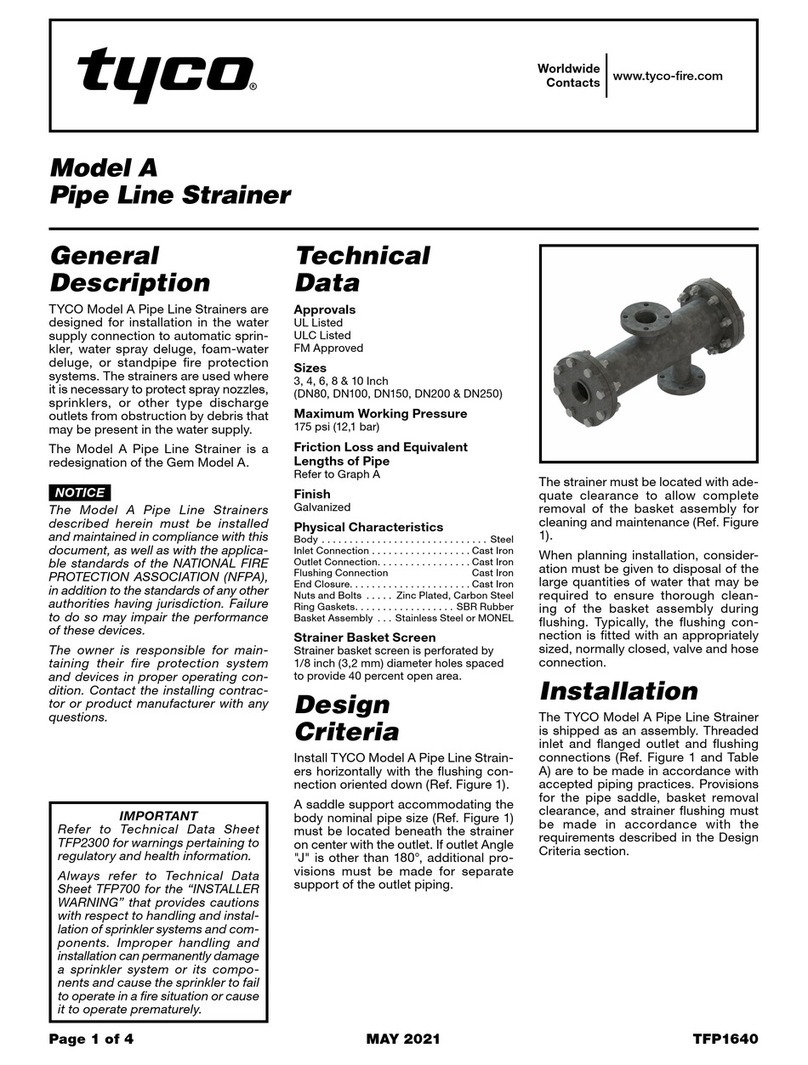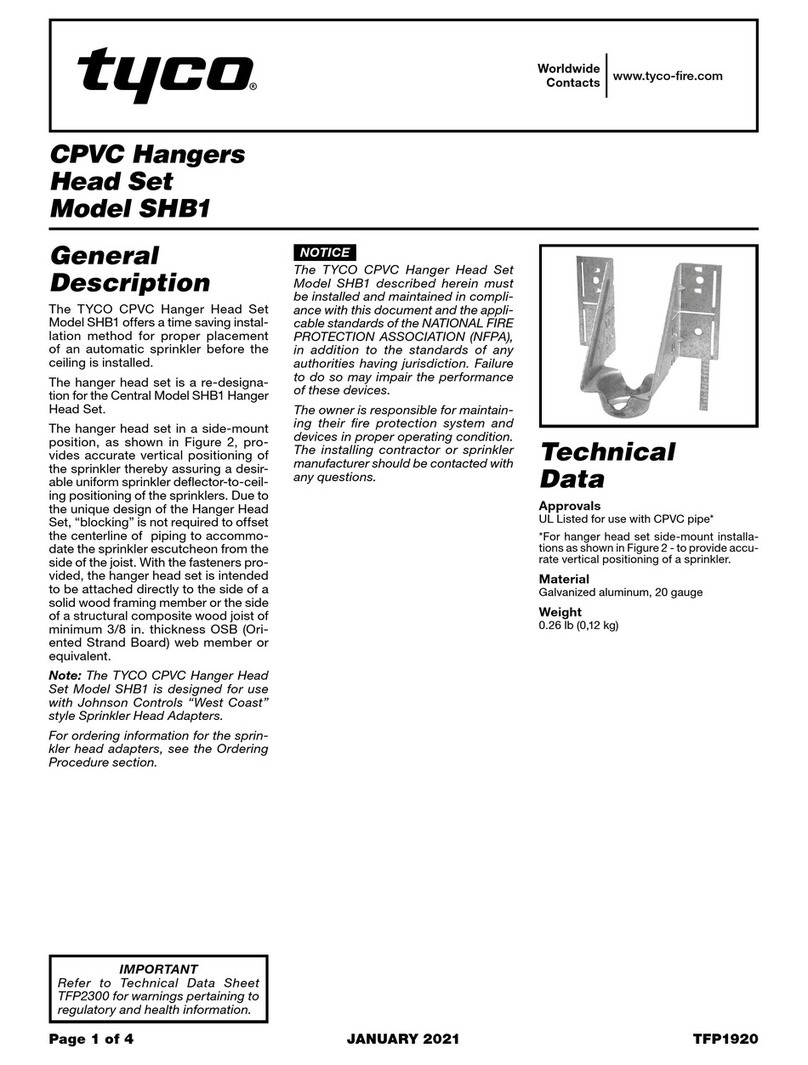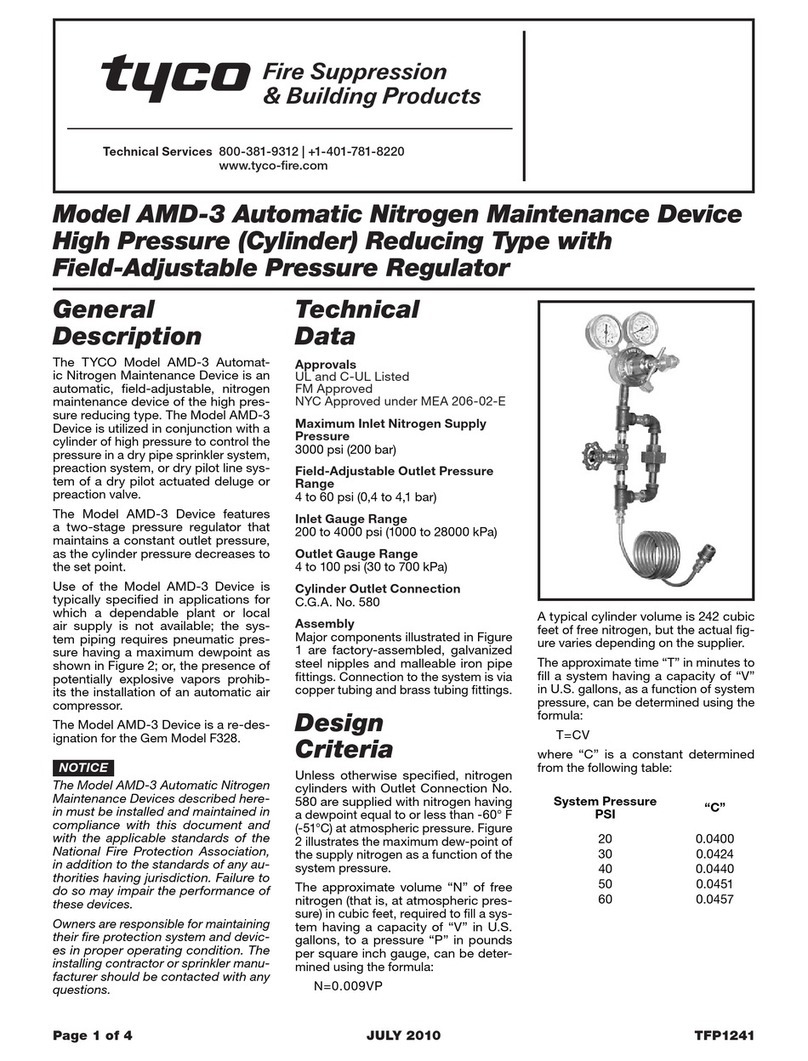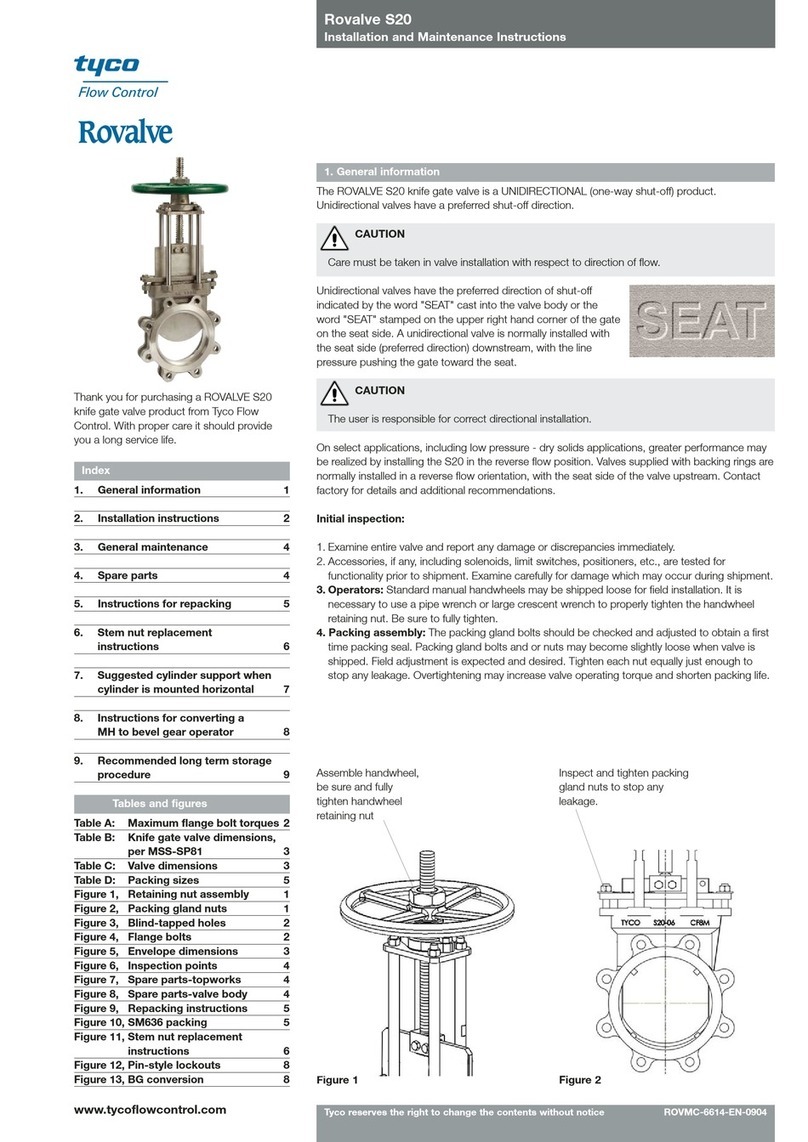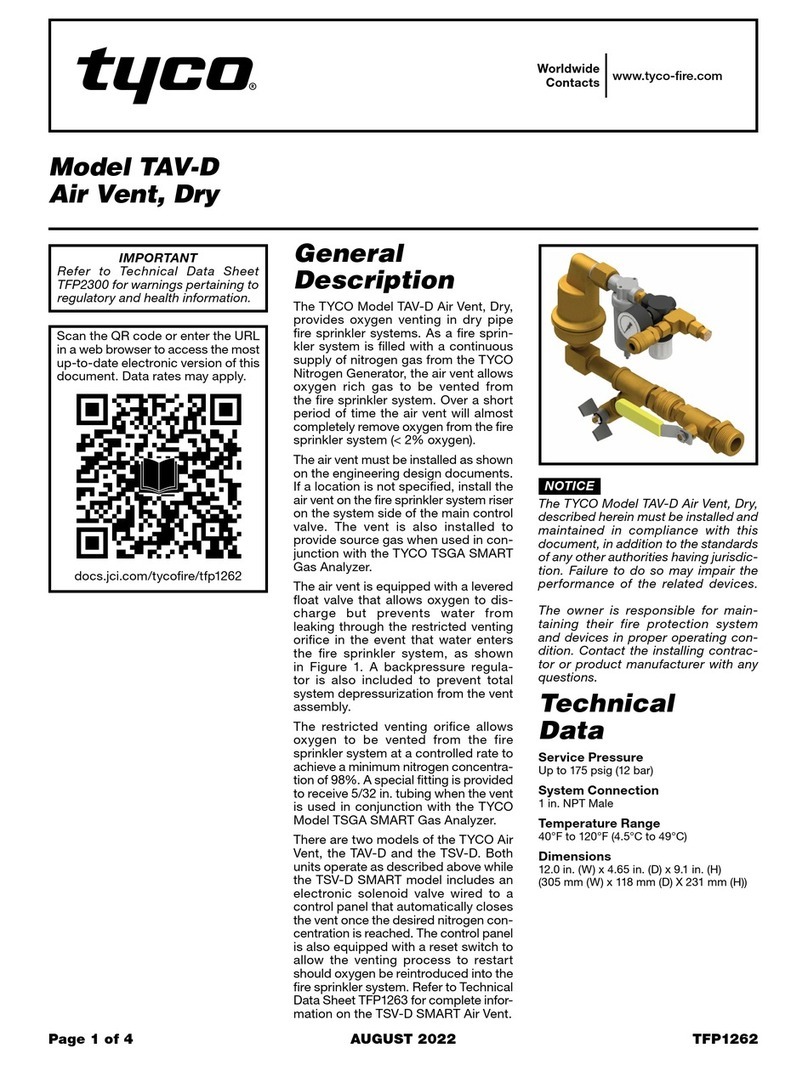
TFP815
Page 5 of 6
Design
Criteria
Nozzle Placement
The nominal overall spray patterns,
spacing, and maximum recommended
axial distances for six patterns of the
Type HV Nozzles are given in Figure 2
for residual (owing) pressures of 30
to 80 psi (2,1 to 5,5 bar). A minimum
residual pressure of 30 psi (2,1 bar) can
typically be used for most applications.
However, a minimum residual pressure
of 50 psi (3,4 bar) is recommended for
applications requiring higher velocity
water delivery, such as those speci-
fying rapid extinguishment of oil res
by emulsication.
With reference to Figure 2, use of the
“Design Spray Prole” for the “Design
Spray Area” will help assure that direct
impingement on all surfaces will occur.
The “Design Spray Area” shown at the
top Figure 2 - Part 2 of 2 on Page 4
consists of the square of length “S”
within the circular “Overall Spray Area”.
The maximum recommended axial
distances given in Figure 2 are based
on maintaining the specied spray
patterns under a maximum wind
condition of 15 MPH (24 km/h).
Figure 3 provides reference informa-
tion showing the overall still air spray
patterns beyond the maximum 15
MPH (24 km/h) axial distances, when
projecting horizontally.
As shown in Figure 3, the spray
patterns become non-concentric,
beyond a certain point, due to the
affects of gravity.
Main Pipeline Strainers
Even though individual strainers have
been provided, main pipeline strainers
are required for systems utilizing Type
HV Nozzles, since their waterways are
less than 3/8 inch (9,5 mm) diameter.
Installation
TYCO Type HV Nozzles must be
installed in accordance with this
section.
General Instructions
A leak tight 1 inch NPT nozzle joint
should be obtained by applying a
minimum to maximum torque of 20 to
30 ft.-lbs. (26,8 to 40,2 Nm). A leak tight
1-1/4 inch NPT nozzle joint shgould be
obtained by applying a minimum to
maximum torque of 30 to 40 ft.-lbs.
(40,2 to 53,6 Nm). Higher levels of
torque may distort the nozzle inlet and
cause impairment of the nozzle.
1.
With pipe thread sealant applied to
the pipe threads, hand tighten the
nozzle into the nozzle tting.
2.
Tighten the nozzle into the nozzle
tting using an adjustable crescent
wrench. With reference to Figure 1
the adjustable crescent wrench is to
be applied to the wrench hex.
Care and
Maintenance
The TYCO Type HV High Velocity
Nozzles must be maintained and
serviced in accordance with this
section.
Before closing a re protection system
main control valve for maintenance
work on the re protection system
that it controls, obtain permission to
shut down the affected re protec-
tion system from the proper authorities
and notify all personnel who may be
affected by this action.
Sprinklers which are found to be
leaking or exhibiting visible signs of
corrosion must be replaced.
Automatic sprinklers must never be
painted, plated, coated, or otherwise
altered after leaving the factory.
Modied sprinklers must be replaced.
Sprinklers that have been exposed to
corrosive products of combustion, but
have not operated, should be replaced
if they cannot be completely cleaned
by wiping the sprinkler with a cloth or
by brushing it with a soft bristle brush.
Care must be exercised to avoid
damage to the sprinklers - before,
during, and after installation. Sprinklers
damaged by dropping, striking, wrench
twist/slippage, or the like, must be
replaced.
60
26
14
37
45
17
14
37
60
17 45
26
26
60
14
45
37
17
17
37
45
14
26
60
ELEVATION, METERS
HORIZONTAL DISTANCE, METERSHORIZONTAL DISTANCE, FEET
0
00,51,52,0 1,03,03,54,54,8 4,0 2,5
1,8
1,5
1,0
0,5
0,5
1,2
1,0
4,5 4,0 3,5 3,0 2,5 2,0 1,5 1,0 0,5
1,0
1,0
1,5
1,8
0
04,8
0246810121416
16 14 12 10 8 6 4 2 0
6
4
2
0
2
4 4
2
6
4
2
0
1.
2.
Reference data applies to still air.
The Overall Spray Patterns in the plan view are the same as those in Figure 2, Part 1.
FIGURE 3
TYPE HV NOZZLES
OVERALL VERTICAL SPRAY PATTERNS WHEN PROJECTING WATER
HORIZONTALLY BEYOND THE DESIGN PARAMETERS IN FIGURE 2
30 to 80 PSI (2,1 to 5,5 bar)
